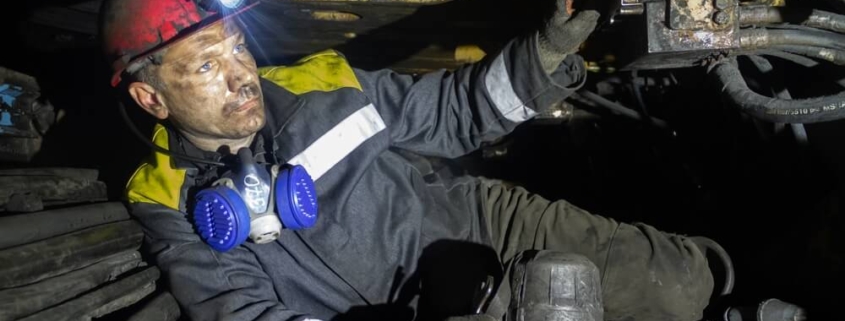What is Black Lung Disease?
Black lung disease is one of the most severe and deadly conditions impacting coal industry workers. The disease is also known as coal workers pneumoconiosis (CWP) and is primarily caused by long-term exposure to coal dust. It’s a condition that is similar to other lung diseases like silicosis and asbestosis. Both of which are also found among people working in the coal mining industry.
Black Lung Disease Cases Are Increasing
Black lung was first named as an occupational disease among coal miners during the 1970s when thousands of workers nationwide were impacted by it. Within several decades, new instances of the disease had all but disappeared thanks to increased awareness in the industry.
By the 2000s, everything changed as black lung disease once again became a major issue in large coal-producing states. Most notably in states like Kentucky, West Virginia, Virginia, and Ohio.
A recent NPR investigation identified nearly 2,000 cases of advanced CWP in these states. One disturbing discovery was that many workers being diagnosed with this condition were young people in their 30s and 40s. Whereas those who previously became ill were much older.
Understanding Black Lung Disease
When coal miners are exposed to coal dust over an extended period, they are likely to inhale that dust. The accumulation of dust in the lungs can lead to inflammation and fibrosis. In progressive cases, miners can develop black lung disease, which is an incurable condition that significantly impairs respiratory function.
What Are the Stages of Black Lung Disease?
Black lung disease usually progresses through several stages, each one characterized by the symptoms present and the severity of the lung damage. Understanding these stages is critical to diagnosing, managing, and treating the disease. The different stages consist of:
Simple Coal Workers’ Pneumoconiosis (Simple CWP)
This stage is characterized by the presence of small lung nodules, which can be detected through CT scans or chest X-rays. Early detection of Simple CWP can be difficult without routine medical screenings because most people don’t experience any noticeable symptoms.
Intermediate Stage CWP
At this stage, the number and size of the nodules increases. However, they still remain quite small. Some people may begin to experience mild respiratory issues, such as shortness of breath and coughing, particularly when they physically exert themselves.
Complicated Coal Workers’ Pneumoconiosis
This stage is characterized by nodules greater than 1 centimeter in diameter and the coalescence of nodules into scar tissue, which can impair lung function. Symptoms become more pronounced, like severe shortness of breath, persistent cough, and reduced ability to perform physical activities.
Advanced Complicated CWP
In the most advanced stage of CWP, there is extensive lung damage, with large masses likely present in both lungs. Many people also experience other health complications, such as heart failure, pulmonary hypertension, and respiratory failure. Symptoms include severe fatigue, chronic coughing, and reduced quality of life.
How Black Lung Disease Impacts Miners
The most obvious effect of black lung disease on miners is physical. People who were once able to handle some of the most physically demanding work will be unable to breathe freely or walk easily from one room to another without difficulty. There is also the emotional strain of dealing with a serious work-related disease.
The financial consequences of black lung disease can be devastating for victims and their families. The medical bills can be overwhelming. And, if the miner is still working, they may have to stop, which results in lost income.
Employer Responsibility to Keep Workers Safe
According to the Occupational Safety and Health Administration (OSHA), employers have an obligation to keep workers safe from harmful conditions that could cause injury or illness. One of the reasons that black lung disease has become so prolific is due to changes in the way coal is being mined. Specifically, mining companies are more focused on production and efficiency, so they are requiring employees to work longer hours and use personal protective equipment (PPE) like dust masks that aren’t effective in blocking coal dust.
Coal mining companies are being faced with millions in black lung claims from employees who receive a CWP diagnosis. There is no statute of limitations for these claims, meaning there isn’t a time limit to file after you stop working or receive a diagnosis.
Know Your Rights If You’ve Been Exposed to Coal Dust
OSHA’s standards were created to protect the safety and health of workers. Unfortunately, too many workers are still exposed to dangerous and deadly materials like coal dust and end up with serious health-related conditions.
OSHA standards apply to most employers in the U.S., meaning you have the right to these protections and should understand how to assert your rights if you become ill. If you’ve been diagnosed with black lung disease and would like more information about your rights, our OSHA Injury Attorneys can help.




Leave a Reply
Want to join the discussion?Feel free to contribute!